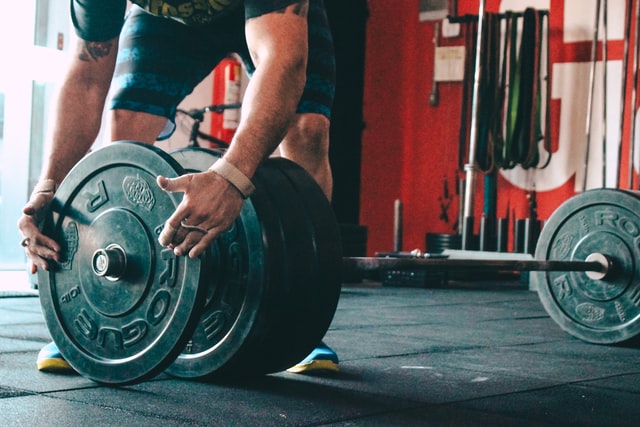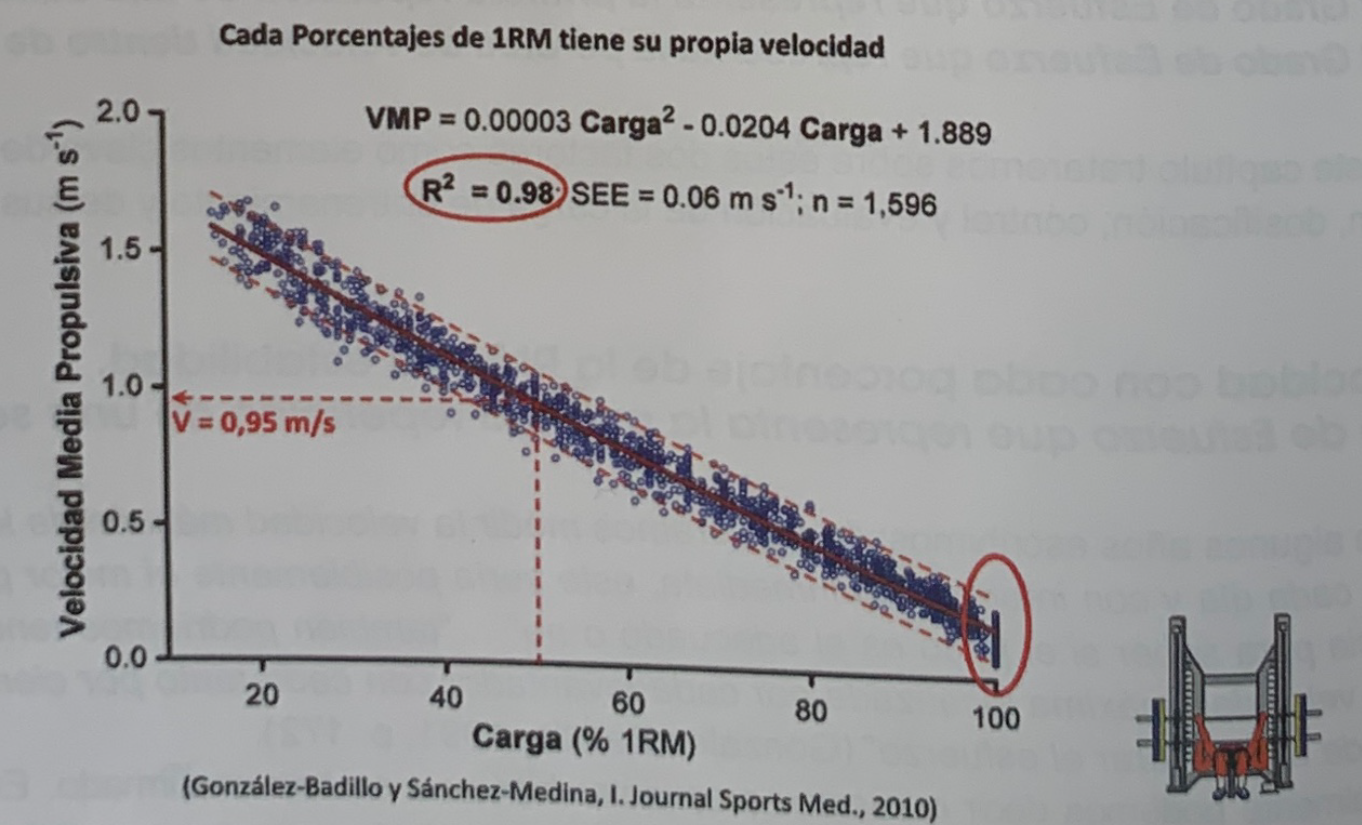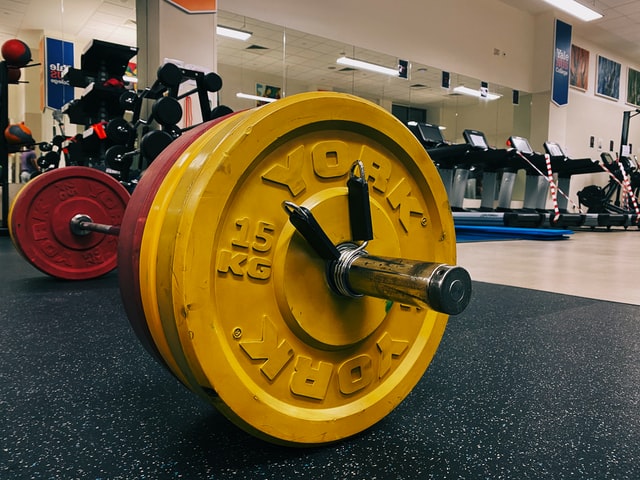To reach muscle failure or not during training?
In this post, an exhaustive analysis will be made on why you should not reach muscle failure during training. Publications with several studies in this regard will be reviewed and the drawbacks of this form of training will be added.
In this series of articles we deal with some of the most important concepts of strength training, collecting notes from the recently published book Strength, Speed and Physical and Sports Performance written by renowned researchers Juan José González Badillo and Juan Ribas Serna.
SUMMARY
- For the recruitment of motor units: with a predominance of fast fibers, very important for improving strength —and hypertrophy— and speed of execution, it does not seem necessary to reach muscle failure.
- the maximum volume achievable at the same maximum and average relative intensity does not produce the best results in competitive athletes in snatch, two-stroke and squat exercises.
- A high hormonal environment does not seem to have an influence during the post-training phase of protein synthesis, since hormone levels drop to basal values within a few minutes.
- With less mechanical, metabolic, and hormonal stress—far from muscular failure—strength can be improved to the same or greater extent than reaching muscular failure.
- What has been observed is that more time under tension tends to produce more protein synthesis, but not more force.
- There are several studies in which it is concluded that reaching failure does not provide better results than not doing so.
What is muscle failure and origins
If you consult any text, not only ancient, but even modern, and ancient and modern “scientific” articles, related to strength training, in almost all cases it will be recommended that to improve “maximum” strength is necessary perform the maximum possible number of repetitions in the series. In this situation, you would be facing what is known as “reaching muscle failure”, that is, not being able to do more repetitions than have been done in the series.
This form of training was initially applied in the 1940s, when Thomas L. DeLorme, a US military physician and rehabilitation specialist, was trying to rehabilitate polio patients and war wounded. The idea of training for the maximum number of repetitions in the series came to him from his own experience training “on his own” with weights to recover from rheumatic fevers, instead of on bed rest.

Initially, the training applied to the patients was 7 series of 10RM five times a week. He called this training “heavy resistance exercise” although he soon realized that this load was excessive and changed to “progressive resistance exercise”, which consisted of doing series of 10 repetitions, but not all with the maximum possible load, but a set with 50% of the 10RM, a second set at 75% and a third set at 100% of the 10RM.
If the patient could do more than 10 repetitions in the third set, the weight should be increased. This is “the famous 3x10RM training”, which had a different meaning from what has been understood to date. In fact, what became popular and applied to practitioners of strength training, competitive athletes or not, was 3x10RM, but all at 100 possible repetitions.
That is to say, the interpretation of the proposals of DeLorme and his collaborators was clearly wrong, because, over the years, it has been observed that DeLorme’s second proposal was more rational than the one applied by the majority of specialists in the training of force. For more information on DeLorme’s contributions, see Todd et al. (2012) and González-Badillo et al. (2017).
In the years 40-70 it was not very well known what was the reason why training until muscular failure was effective
Later, during the 1970s, the idea of using training to failure was reinforced with the recommendations of Arthur Jones, founder of Nautilus 4 Sports / Medical Industries and MedX Corporation, who proposed that one series always be done until muscular failure. , 8-12 repetitions, once or twice a week maximum, and at low or controlled speed, because “this is best for improving muscle mass, strength, power, and endurance” (in Smith and Bruce -Low, 2004).
In the years 40-70 it was not very well known what was the reason why training until muscle failure was effective, and since it had not been experimented with other types of training, this effectiveness led to this type of training being considered as the best, and for many the only and necessary way to improve strength… and everything that can be improved.

Over the years, explanations for this apparent effectiveness have been found and up to now some reasons have been given to justify it. However, what is characteristic of these explanations is that they are always linked to the processes that produce or can produce a greater increase in muscle mass or hypertrophy. In other words, justifying training to failure as a way to improve strength is the same as justifying the way to achieve greater hypertrophy, a condition considered practically necessary and proportional to the improvement in strength.
Several comments can be made in relation to the above. The first is that strength improvement is understood exclusively as RM improvement. What happens with the rest of the loads that have to be moved “is not an improvement in strength”. The second is that it seems that if there is no noticeable or detectable improvement in hypertrophy there is no improvement in strength. As seen, these are two approaches that do not conform to reality.
Why is it proposed to train to muscular failure?
The reasons that are proposed to justify the application of muscular failure are, generally, the following:
- the possibility of achieving greater recruitment of motor units,
- the greatest muscle damage,
- increased levels of anabolic hormones,
- the increase in muscle mass,
- the longest time under tension…,
Since all this contributes to the improvement of hypertrophy and, therefore, “to the improvement of maximum strength” (1RM). Some issues related to this proposal are the following.
The possibility of achieving greater recruitment of motor units.
This is considered necessary because “the important thing to achieve maximum muscle activation is to reach failure, regardless of the number of repetitions performed” (Behm et al., 2002). Although, the same authors indicate that more than 20 repetitions no longer seems convenient.
However, for the recruitment of motor units: with a predominance of fast fibers, very important for improving strength —and hypertrophy— and speed of execution, it does not seem necessary to reach muscular failure, because it has been observed that this recruitment can be achieved with 3-5 repetitions less than those necessary to reach muscular failure (Sundstrup et al., 2012), and because, especially, these motor units are recruited without reaching failure if the action it is performed at the maximum possible speed (in an explosive manner) (Desmedt and Godaux, 1977, 1979: Van Cutsem et al., 1998

Since the absolute force at which a motor unit is activated is not fixed and varies with speed and type of activation, which is accompanied by a decrease in the recruitment threshold as force output in the motor unit increases. time (maximum explosiveness) (Desmedt and Godaux, 1977), which is consistent with the observation that most motor units are activated at approximately 40% of maximum load during actions performed at maximum speed (expression of explosiveness) (Enoka and Duchateau., 2019)
Therefore, the motor units of maximum activation threshold can be recruited almost immediately after beginning the exercise if the action is performed at the maximum possible speed, pol o that it does not seem that it is necessary to reach muscular failure to achieve the maximum possible recruitment. of motor units.
muscle damage
Muscle damage, since it will lead to greater degradation and protein synthesis, activation of satellite cells, inflammation, all closely related to hypertrophy. This muscle damage is associated with a high volume of training with medium or high loads, and the more you train, the greater the muscle damage. However, it should be noted that the training effect cannot be based on the proposition that “the more you train the better”, because, among other reasons, it has been observed that an excessive frequency of strength training, which would lead to a greater volume of work, can keep inflammatory processes increased and reduce Akt phosphorylation (Coffey, 2006, doctoral thesis), which which would lead to a decrease or inhibition of the cascade of signals that lead to protein synthesis.
In some studies it has been observed that the maximum volume achievable at the same maximum and average relative intensity does not produce the best results in competitive athletes in snatch, two-stroke and squat exercises (González-Badillo et al., 2005), although in this case none of the three experimental groups even reached muscle failure. Losing 10 or 20% of the speed reached in the first repetition in the series —which means being very far from muscular failure— in the squat exercise better results are produced, especially in actions performed at high speed, than continuing doing repetitions in the series until losing between 40 and 50% (loss close to muscular failure) of the initial speed (Pareja-Blanco et al., 2017; Rodríguez-Rosell, Doctoral Thesis).
Therefore, it does not appear that high muscle damage is necessary to improve strength.
Increased levels of anabolic hormones.
It is true that a higher hormonal level increases the probability of interacting with specific receptors, facilitating the metabolism of proteins and the consequent hypertrophy, and that the interaction with hormonal receptors initiates the cascade of signals or events leading to the alteration of the rate of synthesis. of proteins.
For this reason, when the role of anabolic hormones in training is discussed, it is generally associated with their possible relationship with hypertrophy, which, in turn, is consistent with performing the exercises until muscular failure. However, it has been questioned whether some hormones, such as growth hormone (GH), actually have a significant effect on muscle tissue hypertrophy (Rennie, 2003).
Some studies tend to confirm that in a favorable hormonal environment, the effect of training can be greater than in the absence of it. In this sense, it has been observed that carrying out an exercise that sharply raises the levels of circulating hormones improves the performance in the exercise that follows.
For example, exercising the legs before performing arm exercises (Ronnestad, Nygaarad & Raastad, 2011). This combination of exercises resulted in a significantly greater improvement in arm strength (1RM) and power at 30 and 60% RM (i.e. maximal strength improvement at these relative intensities as well, of course). ) than when the arm training was done without the previous leg exercise.
However, if training with the lower limbs is performed that tends to raise hormone levels after performing an exercise of the upper limbs (group A), no different effect is produced than if only the exercise of the upper limbs is performed (group B).
In this study, conducted with young male subjects, hormone levels after leg training were higher in group A than in group B, but neither were changes in muscle cross-sectional area (AST). and in the different types of fibers neither the increases in force were different between both groups.
These data seem to confirm that local mechanisms are the most relevant in gaining hypertrophy (West et al., 2010) and it is concluded that the subsequent elevation of hormone levels is not necessary to increase anabolic processes in young men. .

Since hormone levels remain high for a few minutes and protein synthesis continues for approximately 48 hours, it is considered that the anabolic effect due to the hormonal environment might not be very high (West 8 Phillips, 2012), and therefore , not having a high relevance in the improvement of strength.
In summary, these studies would indicate that a favorable hormonal environment during the performance of an exercise could have an influence on the improvement of strength, but this elevated hormonal environment does not seem to have an influence during the post-training phase of protein synthesis, since hormone levels drop to baseline values after a few minutes.
In addition to these experimental evidences, it has been observed that in order to improve strength it is not necessary to train until muscular failure, which are the typical trainings that generate a higher hormonal effect (Kraemer et al., 1990), but rather that the effect is superior without that maximum hormonal stress, especially before actions carried out at high speed.
Increased muscle mass
Actually, all of the above is related to the increase in muscle mass. There is a general consensus that a moderate number of repetitions per set and training to muscle failure is the type of training that optimizes hypertrophy (Kraemer et al. 2002).
However, it has also been observed that with lower intensities, such as 30% of the RM, if repetitions are performed in the series until exhaustion, there are also important effects on protein synthesis and hypertrophy. Three series at 30% of the RM to failure can produce a greater increase in quadriceps volume (7%) than one series to failure with 80% (3.5%) and the same as 3 series at 80% to failure. failure (7%) (Mitchell et al., 2012), It is proposed that the rate of protein synthesis depends fundamentally on the recruitment of fibers and not exclusively on the use of high intensities. (Burd, Mitchell, Churchward-Venne, 8, Phillips, 2012).
These results seem to indicate that the mechanical signals for hypertrophy occur primarily in individual fibers, and that when low loads are used, but repetitions to exhaustion are performed, type II fibers are recruited. However, greater volume gain does not seem to necessarily translate into greater strength gain.
The described training produced greater improvements in knee extension RM in the two 80% than in the 30% RM groups, and equivalent changes in moment of force (Mitchel et al., 2012). Returning again to the most current and controlled studies (Pareja-Blanco el al., 2017), it has been possible to verify that almost reaching muscular failure (losing 40-45% of the speed in the series in the squat exercise) It produces a greater increase in muscle mass and in the percentages of changes from faster fibers to type II, but no greater improvement in strength at any speed or relative load.
To conclude, muscle mass is positively related to the force that a muscle can generate, but the results of well-controlled studies on the magnitude of the training load and the extent of its effect indicate that it is not necessary to train to produce the force. greatest possible muscle mass or condition or key to improving strength, because with less mechanical, metabolic, and hormonal stress—staying far from muscular failure—strength can be improved to the same or greater extent than reaching muscular failure.
Longer time under tension
In relation to the previous factors, this proposal is based on the fact that training until muscle failure at a certain relative intensity will subject the muscle to a longer time of tension or activity than if it does not reach failure, which would correspond to an average speed minor. It is considered that this may mean a greater stimulus for the muscles, which in theory could increase the possibility of adaptation in strength and hypertrophy.
Consequently, the complementary argument to this is that when doing a movement at a higher speed you cannot apply as much force as if you do it slowly, which would give rise to a smaller effect on the improvement of strength. Neither of the two ways of expressing this justification seems reasonable or serves to explain the effect of time under stress.
In the first place, regardless of whether or not the time under tension (TBT) is a decisive factor as an adequate stimulus to achieve better adaptations, it must be considered that the increase in TBT can occur, fundamentally, in three different ways that would be decisive in regarding the type of stimulus and the effect they produce, although not all of them would allow assessing the effect of TBT.
- The first of these consists of doing a greater number of repetitions in the series —usually until muscular failure— at the same relative intensity (higher TBT), always at the maximum possible speed, compared to doing fewer repetitions in the series (lower TBT). ).
- The second is to do the same number of repetitions at the same relative intensity, but, in one case, intentionally not doing them at the maximum possible speed (higher TBT) versus doing them at the maximum possible speed (lower TBT).
- And the third is the increase in relative intensity for the same number of repetitions, which means, for example, that the TBT with 30% of the RM to do 3 repetitions at the maximum possible speed would be much lower than doing the same repetitions with 90% at the maximum possible speed.
In all the forms indicated, the TBT is different in the two options described in each case, but only the second form would be useful to be able to really compare the effect of the TBT, since in the first the number of repetitions is different and in the third it is introduced the intensity variable, a factor that can have an important influence on the adaptation process, so that the TBT would not be the main or the only one responsible for the final effect.
What has been observed is that higher TBT tends to produce greater protein synthesis, but not greater strength. The study mentioned in the previous point by Mitchell et al. (2012) is an example of how a higher TBT by doing 3 sets to failure with 90% RM (higher TBT) produced greater muscle mass gain but less strength than reaching failure in a set with 80% RM. % (lower TBT), and even less strength but the same muscle mass as 3 series at 80% (intermediate value of TBT).
longer time under tension tends to produce greater protein synthesis, but not greater strength
This is a clear example in which there are difficulties to adequately assess the effect of TBT, since failure is reached with different relative intensities and with different TBT and effects. In another study, exercising at 30% RM to exhaustion slowly (6 s in knee extension) produced greater mitochondrial, sarcoplasmic, and myofibrial protein synthesis than doing the same number of repetitions with 1 s in each knee extension. No information is given about strength (Burd et al., 2012). In this case, there is the drawback that when training at 1 s per knee extension, the exercise was not performed until exhaustion. Therefore, it is observed that it is difficult to find the appropriate conditions to assess the effect of TBT in isolation.
The argument that moving the same load, absolute or relative, at a higher speed means that less force can be exerted and, therefore, less adaptation effect does not seem reasonable. The speed at which the same given load moves will be greater the greater the force applied to it.

Spending more time displacing the same load may add more time for the application of force and muscle activation, but with very low peaks of force, so the initial impulse, which determines the speed of displacement, that is, performance, will be much less. . For this reason, it has been proposed that the determining factor to improve performance, especially in high-speed actions, should be the impulse generated in each action (Crewther et al, 2006), not the time that force is being applied.
As indicated, the second way to increase TBT is the one that really allows us to assess the effect of TBT on strength. With the intention of verifying the effect of doing the movements at the maximum speed possible (lower TBT in this case) or at half that speed (higher TBT), two studies were carried out in which a group performed the training at maximum speed. possible (G100) in each repetition with the maximum load of the day and another at 50% (Gso) of said speed.
analysis of studies on muscle failure maintaining constant effort
One study was conducted with the bench press exercise (González-Badillo et al., 2014) and the other with the squat (Pareja-Blanco et al., 2014). In both cases, they trained 3 times a week for 6 weeks, and the maximum intensity of each session ranged between 60 and 80% of the RM. With these intensities, 3 series were made from 8 to 3 repetitions per series, all very far from muscular failure.
The speed and the execution time were controlled in each repetition. The relative intensity was adjusted in each session based on the average propulsive speed expected for the first repetition of the maximum load of each session. The TBT (execution time in the concentric phase of each repetition) was significantly higher in the G50 than in the G100 in both exercises (360.9 s vs. 228.8 s in the bench press and 383.5 s vs. 260 .5 s in the squat), but the improvements in all the variables indicating strength were significantly greater in the bench press, and in the squat there were greater percentages of improvement and effect sizes in all the variables and even a group x significant measure interaction in favor of the G100 in the vertical jump (CMJ) exercise, an exercise that was not trained.
All of these apparently justifying processes for the need for muscle failure to improve strength are related to the degree of mechanical stress, which is the basis for muscle activation to generate a series of chemical, electrical, and mechanical signals that cause a response. multiple physiological that culminates in the degradation and expression or synthesis of certain specific proteins that give rise to the adaptation of the organism to the type of stimulus received.
In this way, when exercises that are commonly known as strength training are performed, muscle tension tends to be produced, which generates a cascade of molecular processes that contribute to activating positive muscle hypertrophy signals and inhibiting muscle atrophy signals. Naturally, the degree of “tension” must have an appropriate value so that the processes of degradation do not exceed those of protein synthesis.
However, excessive stress could give rise to negative effects that explain why from a certain degree of fatigue or a certain degree of muscular approximation, the effects could be null or even negative for performance, especially for actions carried out at high speed. speed.
Among these factors could be: producing a significant reduction of ATP with high levels of ammonia; excessive muscle damage, with prolonged inflammation processes, with probable inhibition of protein synthesis and reduction of elasticity due to damage to intramuscular elastic structures; reduce the production of anabolic hormones such as testosterone, which would require a longer recovery time between sessions; produce interference with the specific training, due to excessive fatigue and the performance of a high number of requests at low and very low speed during “strength” training…
On the contrary, less fatigue, always performing the actions at the maximum possible speed and with a high average absolute speed during each session, could favor other mechanisms that tend to produce strength improvement without the side effects of reaching muscle failure. , such as the recruitment of fast twitches without excessive fatigue; the stimulation of the synthesis of fast fibers, which would mean a greater efficiency of release / removal of calcium in muscle activation; the non-significant reduction of the percentage of the fastest fibers to the slowest; the greater percentage increase in the cross section of fast fibers and, in all probability, the improvement of neural adaptations: recruitment, synchronization, stimulus frequency, intermuscular coordination.
Since the 1980s, it has been maintained that reaching or approaching the maximum achievable volume in the session, week, month or training cycle does not offer the best results.
Since the 1980s it has been maintained that reaching or approaching the maximum volume achievable in the session, week, month or training cycle does not offer the best results. In 1985 and 1986, a study was carried out in which the effect of doing different volumes was compared with the same maximum relative intensities of each session and the same average relative intensities of each session, week and complete training cycle (12 weeks). ) with competitive athletes and strength specialists (weight lifters).
Subjects performed three different volumes:
- One group reached the maximum volume that they had observed in practice that the subjects could support without reaching extreme fatigue that prevented them from continuing the training (G100),
- A second group performed the same training in terms of maximum and average intensities, but with 85% of the volume of the previous group (G85),
- A third group, also at the same maximum and mean intensities, performed only 65% of the volume of the maximum volume group (G65).
The results showed a curvilinear trend between training volume and performance in the snatch, double jerk, and squat exercises. This tendency means that the G85 tended to obtain the best results, and the G100 and G65 groups obtained similar results. This study carried out in the 1980s, part of Professor Badillo’s doctoral thesis, and was published a few years later (González-Badillo et al., 2005).
The results of this study were included in the 2009 Guideline and “the American College of Sports Medicine (ACSM) in presenting its guidelines for strength training, stating that “greater volume does not appear to offer better benefits”, although , then they ignored the results and continued to recommend the classic XRM
Regarding the repetitions to be performed in the series (failure or no failure), for more than 25 years, it has been proposed that it is probably enough to reach a maximum of half of the possible repetitions in the series to improve strength performance. in most sports specialties and athletes.

The first application of this idea in a sport other than Weightlifting was with the women’s national hockey team —Olympic champions in Barcelona-92— at the beginning of the 90s. Over more than two and a half years, the team improved leg strength (improved full squat), jumping ability, acceleration, and threshold speed (commonly called anaerobic threshold or second lactate threshold) rdoing training, especially full squats, with loads lower than 80% of the RM and with less than half of the possible repetitions in the series.
In the early 2000s, this idea was applied in the experimental setting and training sessions were designed to compare the effect of reaching muscle failure or not (Izquierdo et al., 2006). One group would reach failure with 3 sets of 10 reps and the other would do half the reps possible in the set and 6 sets to equalize the total volume.
At the beginning of the 2000s, this idea was applied in the experimental field and training sessions were designed to compare the effect of reaching muscular failure or not.
This equalization of the volume was always considered unnecessary, but sometimes the demands of the publications force to modify the designs somewhat. In this study it was found that it was not necessary to reach muscular failure to achieve the same or better strength performance. Subsequently, a study was designed in which the volume was no longer matched, once again doing one group half the repetitions of the other (Izquierdo-Gabarren et al., 2010), once again obtaining higher effects in the group that trained with half of the possible repetitions in the set versus reaching muscular failure.
Naturally, these last studies can be considered relatively well controlled, because they were based on the initial criteria to determine the nature of the effort made in a series, estimating the relationship between the repetitions performed and those that could be done in the series. But when you can really talk about the true effect of training to failure or not is when you could start to control the load through the speed of execution, which allowed you to know with very high precision what the absolute load (weight) represented actually the relative intensity programmed for each session, as well as the degree of effort to which the subject was subjected in the series through the control of the loss of speed in the series.
This made it possible to eliminate from the design the number of repetitions to be performed in each series, one of the classic variables of any study that has sought to know the effect of the so-called “strength training”. Therefore, today, if the speed of each repetition can be adequately measured, it does not make sense to program the repetitions to be carried out in the series, because if they are programmed, each participant or athlete could be making a different effort.
it does not make sense to program the repetitions to be carried out in the series, because if we program them, each participant or athlete could be making a different effort
That is, to equalize the volume performed by different experimental groups, something apparently necessary “to control a possible intervening variable in the design, what it does, precisely, is to introduce a foreign variable into the design itself, since the same number of repetitions in the series before the same relative intensity can mean a different effort or degree of fatigue for each subject, since not all subjects can perform the same number of repetitions before the same relative intensity (González-Badillo et al., 2017).
Therefore, If the loss of speed in the series is taken as a reference, and is programmed as an indicator of the training load, and not the number of repetitions in the series, it will be achieved that, before the same relative intensity, the subjects of the same experimental group have made a very similar degree of effort throughout the training cycle, as well as that another or other experimental groups have made really different efforts.
This control of the effort made is what really determines the degree of load and what is interesting to control, if one wants to know the effect of certain types of training loads.
These advances in the control of the training load have allowed us to confirm through several experimental studies carried out in the last 10-15 years that, indeed, a fatigue far removed from that which corresponds to muscular failure tends to offer better results than reaching to failure.
fatigue less than that corresponding to muscular failure tends to offer better results than failure.
In summary, the results of these studies indicated that losing between 10 and 20% of the speed of the first repetition in the series in the full squat exercise, that is, doing half or less than half of the “repetitions possible in the series (very far from muscular failure), with subjects familiar with strength training, always executing the exercises to the maximum possible speed, with intensities between 70 and 85% of the RM, for 8 weeks at two sessions per week, offers better results in trained and untrained exercises than losing 30% or practically reaching failure, with losses of 40-45% speed in the series (Pareja-Blanco et al., 2017: Rodríguez-Rosell, Doctoral Thesis).
Similar results have been found when comparing three groups with losses of 10, 30 and 45% of the speed in the series in the squat exercise with intensities between 55 and 70% of the RM. The 10% loss offered the same or better results in the trained and untrained exercises than the 30% loss and, especially, the 45% loss (very close to muscular failure) (Rodríguez-Rosell Doctoral Thesis).
In the bench press exercise, with intensities of 70 to 85% and losses of 15, 25, 40 and 50%, the effects also tended to be higher with losses close to 30-40% of the speed loss compared to the 50%, loss very close to muscle failure. As can be deduced, these studies are the ones that offer the best guarantees that, indeed, the subjects trained with the relative intensities and the programmed degree of effort or fatigue, which allows us to confirm that the training until muscular failure (maximum or almost maximum loss of speed in the series) do not offer better results than lower losses of speed, even reaching a very low degree of fatigue, such as losing only 10% of the speed in the series.

Losing 10% speed in the squat set at intensities from 70 to 85% means that subjects did, on average, between 3.3 and 2 repetitions per set, when the repetitions possible, on average, at these intensities They range from 10.2 to 5. In other words, there were always far fewer repetitions than half of those possible in a series.
This caused the total repetition volume of the training cycle to be less than the volume of the group that reached near failure. With the 20% loss, the repetitions per series performed were, on average, from 5 to 2.7, practically half of those possible. With these intensities and in this exercise, doing more than half of the possible repetitions in the series (from losing 30% of the speed in the series) already begins to have less positive effect on performance, especially in actions performed at high speed. speed.
Apart from those mentioned, there are already several studies in which it is concluded that reaching failure does not provide better results than not doing so, but unfortunately, most of these studies are not based on designs that really allow us to conclude the advantage of not reaching failure. failed. One of those that comes close to confirming that reaching it is carried out by Sampson and Groeller (2016), who apply training to failure (6 repetitions with 85% of the RM) or doing only 4 repetitions with this relative intensity — this really means a very high effort character and, therefore, with a very high loss of speed in the series, that is, close to failure — it was confirmed that after 12 weeks of training with the exercise of elbow flexion, the effects do not depend on the number of repetitions performed to failure, nor is it a necessary condition to reach it, at the same time that it is not necessary to equalize the volume to obtain the same results in strength, muscle activation and in the cross-sectional area of the muscle.
There are already several studies in which it is concluded that reaching failure does not provide better results than not doing so.
In addition, in this study, the group that performed the movements at the maximum speed possible in the concentric phase and in a controlled manner (2 s) in the eccentric phase, reduced the activation of the antagonist muscles (triceps), which suggests — it is a personal deduction, not that of the study authors, that this may be an execution strategy that favors concentric actions performed at the maximum speed possible. However, this study, which is one of the most adjusted to verify the effect of failure compared to no failure, has the drawback that the stimuli were very similar, so it is logical to expect that the results were also very similar.
In other words, although the results favor “the hypothesis of not reaching failure”, the study leaves a wide field of uncertainty about the minimum load that could be equivalent or superior in its effects to the load that represents muscle failure. The answer to this uncertainty can be found in the series of studies presented in the two previous paragraphs, in which you can see the progressive tendency to decrease performance from certain values of: degree of effort / loss of speed in the series / degree of fatigue / decrease in average training speed / increase in volume.
Disadvantages of programming and training with the classic XRM or nRM
On the other hand, in a recent review, Davies et al. (2016) conclude that a similar increase in strength can be obtained without reaching muscle failure as reaching it. Programming, expressing and performing the training through the classic XRM or nRM, apart from the fact that you probably won’t get the best performance benefits, It has a number of drawbacks:
It is based on the mistaken idea that being able to perform the same number of maximum repetitions before the absolute load that corresponds to each subject means that you are working with a certain relative intensity or percentage of 1M, since each percentage of 1RM can be performed , on average, a certain number of repetitions.
On the other hand, doing the same repetitions with a certain load does not mean that you are working with the same percentage. The maximum value of the range in which the number of repetitions performed at the same intensity is found, from 50 to 85% of the RM, can double the minimum value, with an average coefficient of variation of -20% (González-Badillo et al., 2017). Therefore, two subjects who have trained with the same number of maximum repetitions per set may have trained with very different relative intensities.
two subjects who have trained with the same number of maximum repetitions per set may have trained with very different relative intensities
It is not realistic to propose a training such as: 3x10RM, which means that the subject must perform 3 series of 10 repetitions with a load (weight) with which, in the first series, they can only really perform 10 repetitions. No one person can perform this workout, because they will never be able to perform all three sets of 10 repetitions with the same absolute load.
Sometimes it is proposed that as the series is done, the load is reduced in order to reach the programmed repetitions, which is even more unrealistic, since it is not possible to know “what exact weight must be reduced” so that they can be done precisely. the repetitions predicted in the previous fatigue.
Always training with the maximum number of repetitions possible per series, even if fewer repetitions were done in successive series with the same weight, can produce at least the following negative effects: excessive fatigue, increased risk of injury and reduced execution speed before any load (high loss of speed in the series). All this can lead to reduced sports performance.
From the foregoing, it can be deduced that it would be very reasonable for no XRM value to be measured, neither for training nor to assess the effect of training.



















